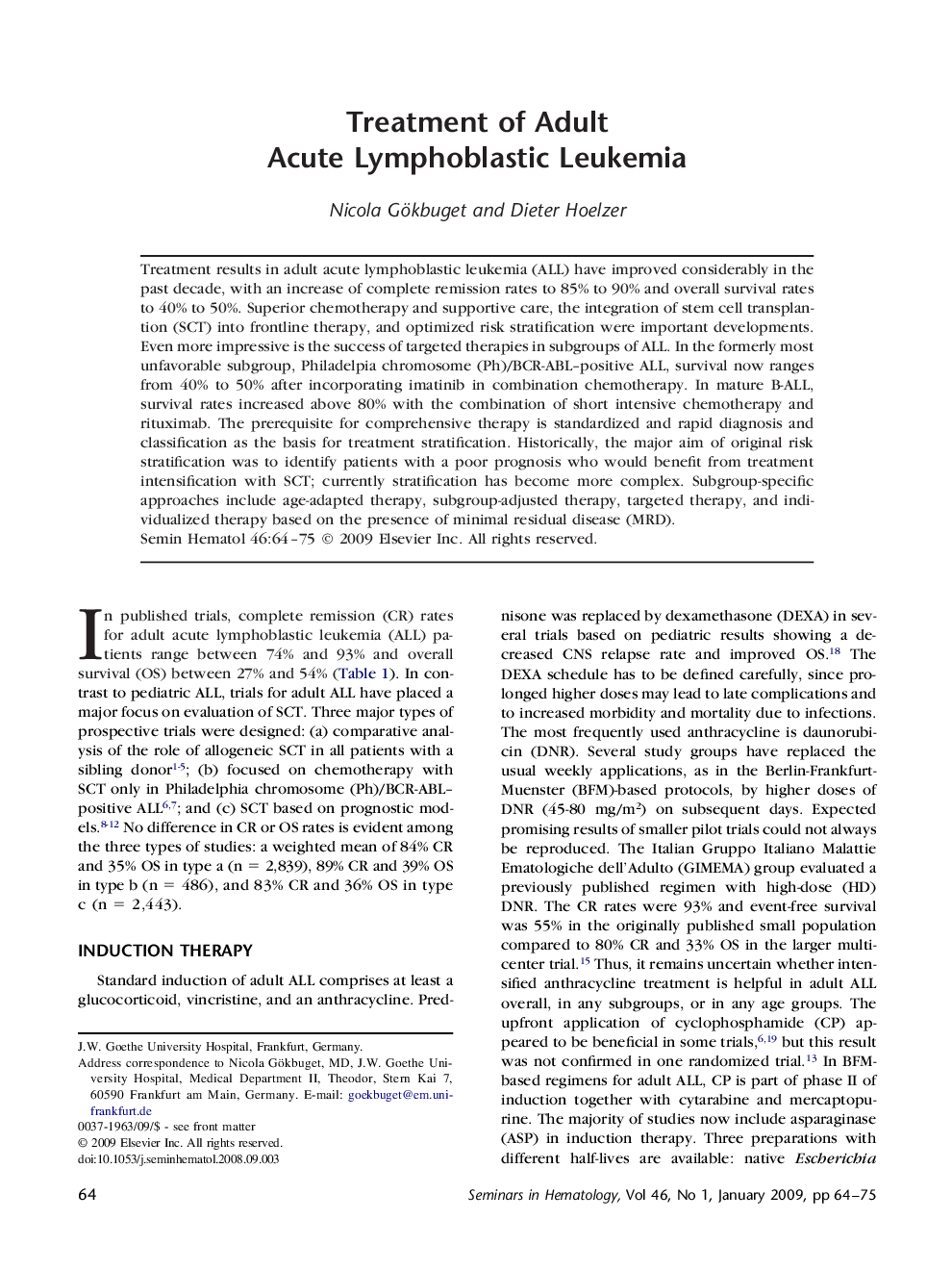| Article ID | Journal | Published Year | Pages | File Type |
|---|---|---|---|---|
| 3333951 | Seminars in Hematology | 2009 | 12 Pages |
Abstract
Treatment results in adult acute lymphoblastic leukemia (ALL) have improved considerably in the past decade, with an increase of complete remission rates to 85% to 90% and overall survival rates to 40% to 50%. Superior chemotherapy and supportive care, the integration of stem cell transplantion (SCT) into frontline therapy, and optimized risk stratification were important developments. Even more impressive is the success of targeted therapies in subgroups of ALL. In the formerly most unfavorable subgroup, Philadelpia chromosome (Ph)/BCR-ABL-positive ALL, survival now ranges from 40% to 50% after incorporating imatinib in combination chemotherapy. In mature B-ALL, survival rates increased above 80% with the combination of short intensive chemotherapy and rituximab. The prerequisite for comprehensive therapy is standardized and rapid diagnosis and classification as the basis for treatment stratification. Historically, the major aim of original risk stratification was to identify patients with a poor prognosis who would benefit from treatment intensification with SCT; currently stratification has become more complex. Subgroup-specific approaches include age-adapted therapy, subgroup-adjusted therapy, targeted therapy, and individualized therapy based on the presence of minimal residual disease (MRD).
Related Topics
Health Sciences
Medicine and Dentistry
Hematology
Authors
Nicola Gökbuget, Dieter Hoelzer,
